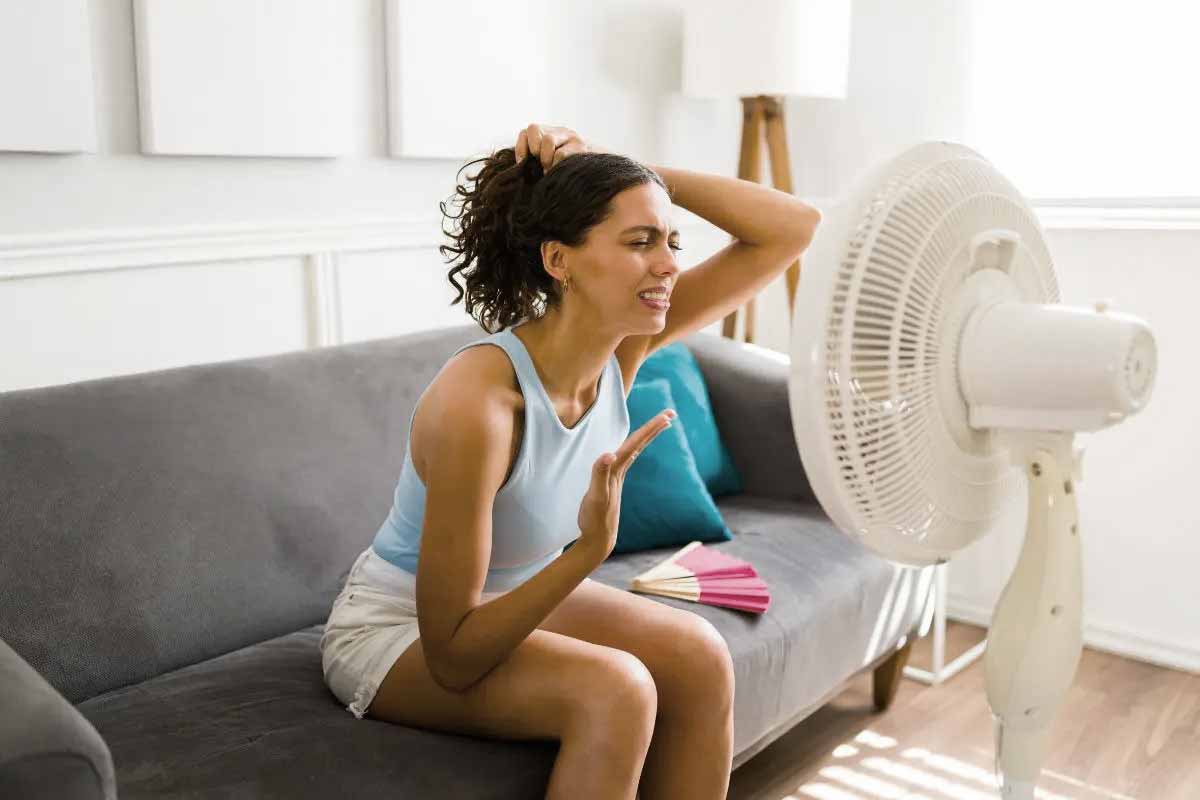If you want to stay cool without air conditioning, start with the floor under your feet. Heat rises, and your soles notice first. Old houses knew this and played it smart. They leaned on materials thatbreathe, not trap. That idea still feels fresh, and wonderfully human.
A forgotten summer habit
Picture a July afternoon when the sun bites. Windows half-open. Citrus light across the tiles. In the 1950s, homes reached for a simple fix that asked almost nothing from the grid. Thin rugs in cotton, jute, seagrass, or bamboo. Light. Breathable. Tough enough for sandy sandals and wet swimsuits. People rolled up the thick wool and tucked it in the attic.
They laid these airy mats over cool stone or ceramic, and the house exhaled. You could cross the room without a flinch. You could sip a lemonade and feel the ground give back a little freshness. That’s how families would stay cool without air conditioning while life hummed around them doors swinging, radios murmuring, kids racing in and out. Not a gadget in sight. Just texture, airflow, and a floor that didn’t hoard heat.
Stay cool without air conditioning
The appeal wasn’t only comfort. It was rhythm. Mornings felt crisp because the tile held the night’s chill. By noon, the mats cut the bite from sun-warmed floors. At dusk, they breathed out the day with you. Between the 1930s and the 1960s, this was common from France to Algiers to Saigon.
Verandas wore these rugs like summer shoes. Dining rooms did too, especially under tables and near French windows. They let air travel instead of trapping it. They wicked a little moisture, then released it when the air dried out. Simple physics, cozy results. It’s still a quiet way to stay cool without air conditioning, and it doesn’t fight your home. It works with it.
The science under your soles
Hot rooms feel worse when surfaces radiate heat at you. Thick pile rugs store warmth and bounce it back into the air. Natural fiber mats behave differently. They’re light, porous, and quick to cool. Put one over tile or polished concrete, and you create a small air gap. That gap matters. It buffers the foot from shock heat and lets cooler air move.
The floor stays cool longer, and the room breathes. Cotton feels soft and honest. Jute and seagrass bring texture and a coastal mood. Bamboo is smooth, almost silk-like under bare feet. Each handles humidity better than heavy wool in August. They dry fast after a spill. They don’t cling to heat the way dense fibers do. With these choices, you build a room that can stay cool without air conditioning even when the forecast gets pushy. A fan becomes a gentle helper, not the hero.
From verandas to living rooms
There’s history here, and it’s charming. Summer mats once showed up in practical catalogs, then in glossy department windows. People bought them for second homes by the sea, and for city flats roasting under zinc roofs. They slid them under console tables, layered them near balcony doors, lined hallways where the breeze slipped through.
The idea traveled, because it worked in many climates. It also asked for very little care. A shake. A quick brush. Sun for an hour, then back inside. No drama. That mix of ease and effect made the habit stick. Today, you can do the same in a tight studio or a rambling house. Roll up the thick pile in May. Unfurl something lean. The room lightens. Your step lightens. You’ll stay cool without air conditioning more often than you’d expect. And you’ll look at the season with kinder eyes.
Style that breathes
Let’s talk feeling. These rugs bring calm without trying too hard. Soft sand shades. Woven stripes. A hint of shore, even far from the coast. They play well with linen curtains, rattan, matte ceramics, and a wooden bowl full of lemons. If your place leans modern, choose clean edges and a flat weave. If it leans vintage, let frayed hems and handmade knots tell their story. Either way, your space earns texture and a little movement in the light.
You don’t need to smother the floor. Leave margins for the tile to show. Layer a runner where the sun lands at noon. Drop a mat by the French doors to cool the path to the garden. Swap the heavy velvet cushion for linen. Let air drift. The room will stay cool without air conditioning because every choice whispers the same message: breathe. When evenings roll in, the house feels soft around you. You’ll notice it in the way conversations linger, and how sleep arrives without a fight.
Practical moves, zero fuss
Start with the warmest zones. If sunlight paints a hot rectangle on the floor, cover that patch with a breathable rug. Keep fibers thin. Aim for cotton, jute, seagrass, or bamboo. Shake them outdoors each week. Rotate them so the same edge doesn’t bake all summer. If humidity climbs, give them an hour of morning air.
Add light curtains to slow the sun, and crack opposite windows to set up a breeze. You’re building layers of comfort, not walls. The result isn’t icy. It’s steady, gentle, agreeable. The kind of cool that lets you sit, read, and forget about the heat for a while. You can stay cool without air conditioning and still keep the place beautiful. That’s the charm of this old practice. It respects the season. It respects your home. Most of all, it respects the way you live in it.
